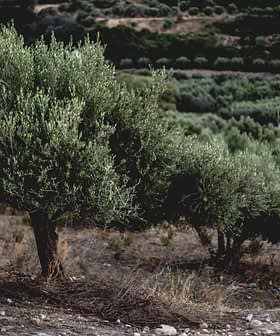Jordan’s olive harvest is proceeding quickly, and the overall yield currently exceeds 22 thousand tons.
According to Mahmoud Al-Omari, the local olive oil millers association representative, 90 percent of the olive harvest has been completed.
See Also:Olive Production Center of Gravity Moves EastwardA local spokesperson for the United Nations Food and Agricultural Organization (FAO) told Jordan News that at the end of the year, overall olive oil yield in the country is expected to reach 24 thousand tons.
Such volumes allow Jordan to meet its own olive oil needs. International Olive Council (IOC) figures show that in the 2021/2022 season, Jordan’s national olive oil consumption reached 21 thousand tons. For the new season, modest consumption growth is expected.
Still, olive oil production figures are significantly lower than expected. At the end of October, the Minister of Agriculture, Khaled Al-Hneifat, had estimated a 20 to 25 percent growth in olive oil production with overall volumes exceeding 30 thousand tons.
According to a Ministry spokesperson, Lorance Majali, professionals have now reduced their estimates to 28 thousand tons. The IOC states that an average harvest yield is 23.85 thousand tons.
In a note by Al-Rai news, Al-Omari noted that the oil volume in the fruits was less than expected, thus affecting overall olive oil yield.
He added that the high quality of Jordan’s local extra virgin olive oil and its international reputation support significant exports, which are expected to grow this season. In 2021/2022, the country exported 4.5 thousand tons of olive oil.
According to local experts, the reduced yield is associated with the challenging season. In a Jordan Times report, local olive growers lament the impact of exceptional weather conditions on rainfed olive orchards.
Local farmers believe a lack of rainfall during the olive ripening stage might have halved their yield. Others underline how excessive heat and heat waves added to the stress on olive trees.








